My mother was a young, long-haired, bell-bottomed girl of 18 when she began to nourish me into this life. In a farmhouse in the Irish Gaeltacht (Irish-speaking region) on the side of Mount Brandon in County Kerry into which the streams of fresh fallen rain ran, she would eat the vegetables sown by my grandfather in the garden below the house, the eggs from the hens in the barn, the raw milk from the cows who also lived there, the fresh lamb that met its fate on the hill, the seaweed and cockles found on the shore and silvery fish caught in icy lakes. There would also be sizzling pans of black blood pudding, tea and bread, sugar, golden and sometimes handmade butter, and the odd cake or pie containing things like blackberries and apples.
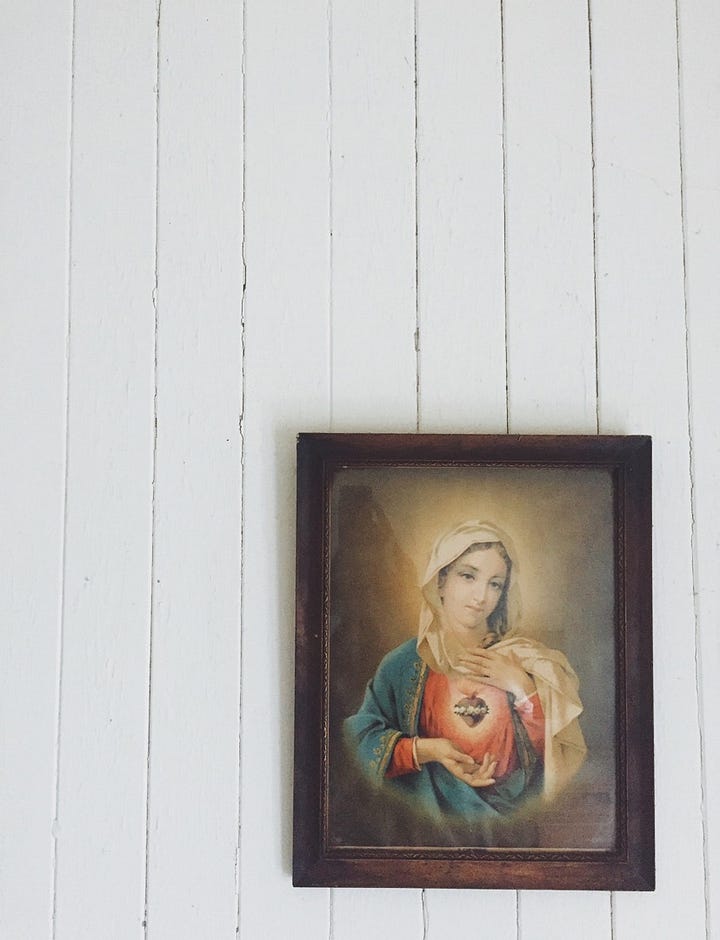
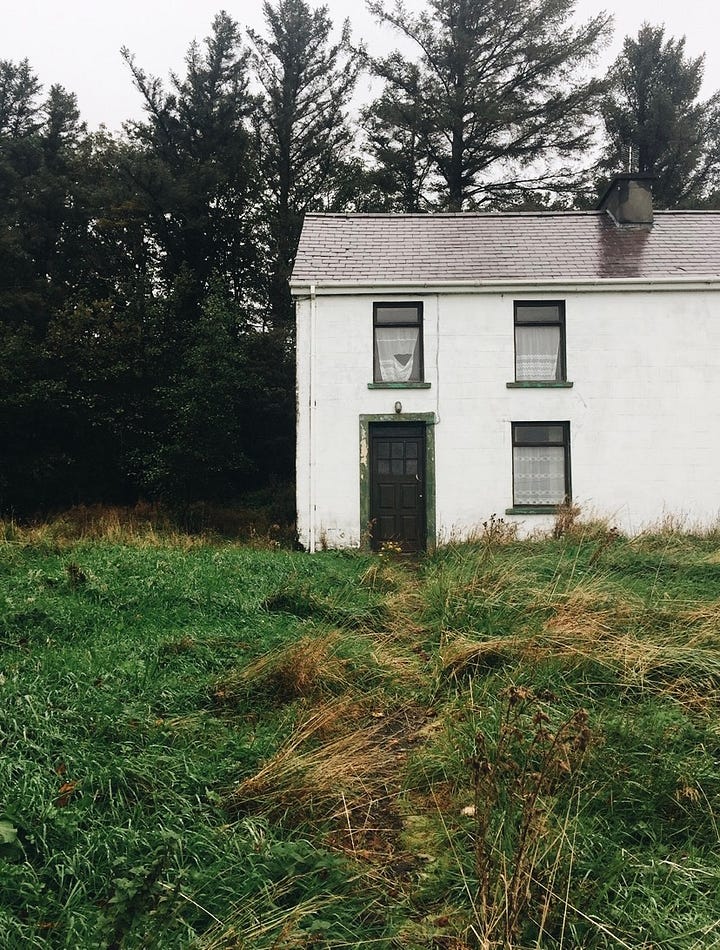
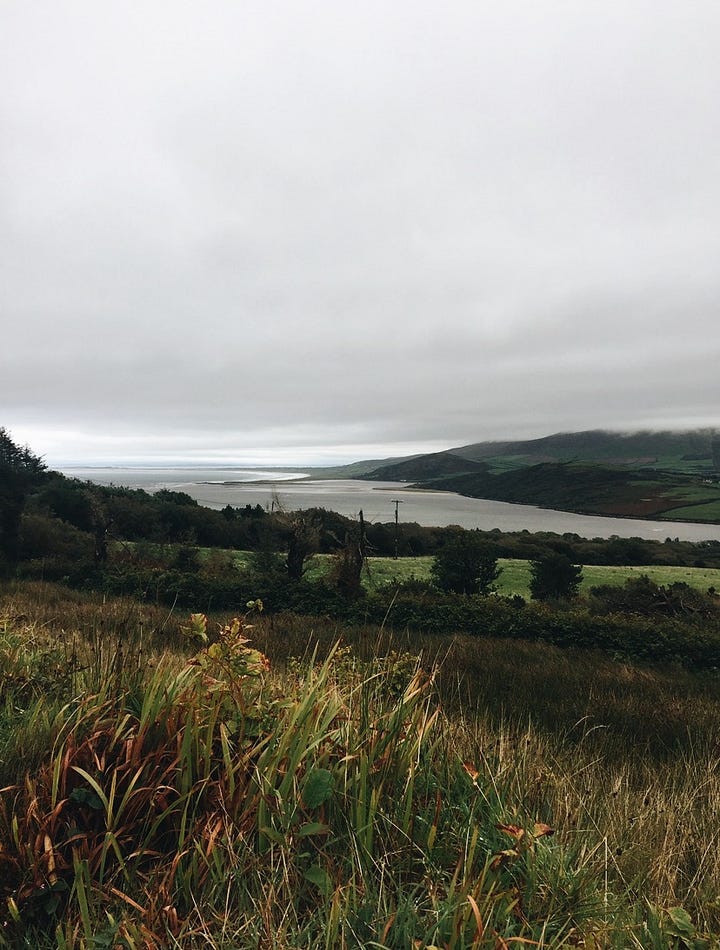
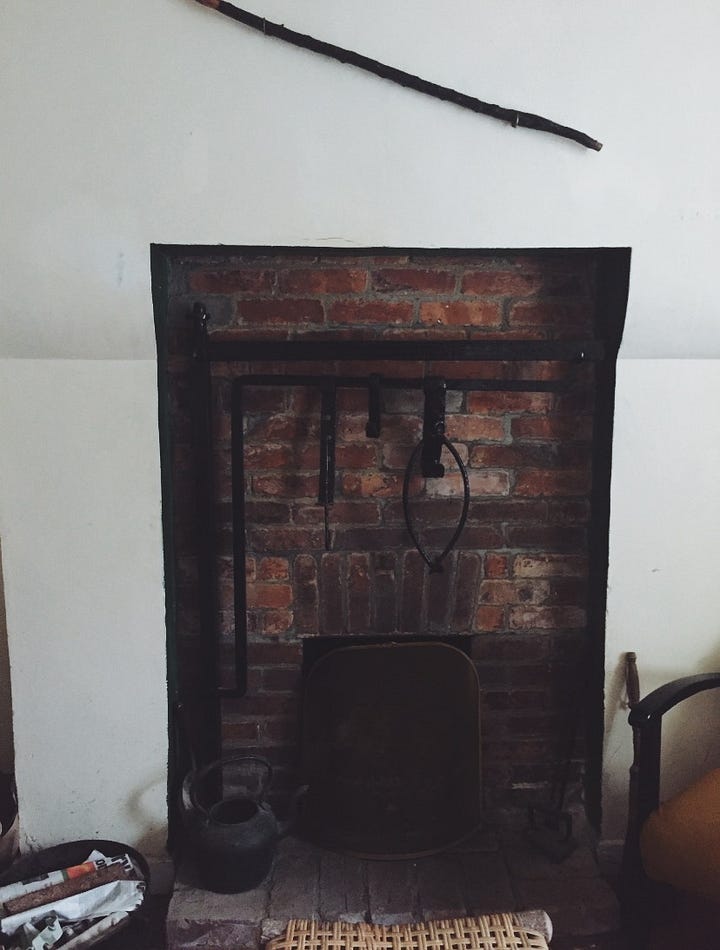
This would all be prepared by my grandparents’ hands until they received word of my Uncle John’s pneumonia causing my grandmother, a Castlemaine woman, to part for her comfortable home in America where she would find her 2 eldest sons. My grandfather would stay behind to tend to my mother, now a young bride, and their other 3 children enrolled in the local school.
In that farmhouse, my mother would remain, despite her married state, until January 1977, when my father left his parents and 11 sisters and brothers behind in the Tralee of a dark Catholic Ireland (oppressive to women), to join my mother on the plane to Boston which would take them across the ocean, and into the rest of their life. Arriving in a snowstorm, the young couple took a bus to Springfield, and then a taxi to join my grandmother in this already-established American homestead. I was born 3 months later.
As an Irish American child growing up in Springfield, Massachusetts, and like other children of immigrant families, we are born into these self-contained little worlds where conversations, food, news, and people to which daily life refers also belongs to places far away. Little houses are little countries and life in America has always meant that you can travel internationally just by taking a spin around the block. No need for a plane – it’s a beautiful thing.
A messy red bowl of Spaghetti O’s eaten in the 2nd-floor apartment of my grandparents’ house in Forest Park is my first food memory. Probably inspired in some twisted way by Sicilian anelli, this open can was part of the SAD (Standard American Diet) diet that our fresh farm produce family would consume stateside. I imagine it was always this way.
My mother has often reminded me of how I would sit on the table to help my tall, strong grandfather with his big gentle pipe holding hands to unload brown paper shopping bags containing things like chocolate whoopie pies, cans of pale Green Giant peas (Ho,ho,ho), ‘offal’ sliced liverwurst, white bread and the shiny Brach’s butterscotch candies that he would gift to me. This was until he lost his years-long battle with prostate cancer at the age of 62 when I was 5 years old.
My grandparents’ life swung like a pendulum between Ireland and the U.S. Today, I wonder if my grandfather would have lived a bit longer had he stayed on Mount Brandon where his fellow farmers lived well into their nineties. Like those people who return to their homelands to die, and then don’t.
Growing up and continuing to spend a considerable amount of time under my grandmother’s roof, I remember that the refrigerator was always quite bare. We survived on English muffins (which I now abhor), marmalade, bologna (and liverwurst!) sandwiches, buttery toast, bowls of cereal, frozen chicken pot pies and copious amounts of sugary tea. With an intense social schedule and a closet full of fabulous coats, cooking just wasn’t her thing.
We spent a lot of time sitting around the kitchen table chatting, reading the paper and drinking tea, but I don’t remember ever sitting down here or in our own home as a family to enjoy a proper meal. Both my mother and grandmother appreciated good food, but cooking it with love on a frequent basis wasn’t their thing. We would occasionally enter my grandmother’s front door to catch the sweet intoxicating scent of freshly baked soda bread, and she would break out her traditional ‘party pieces’ for the holidays to serve on good china in the formal dining room, but this was all consumed faster than you could say ‘potato stuffing’ - like eating was some kind of race.
We returned to Kerry for a summer visit when I was 4, the first and only time I would meet my nan a Castleisland woman and my grandad a Sligo man from Mullaghmore (his kitchen garden and goat the subject of my father’s tales). I remember my nan’s soft gentle voice, her ocean blue eyes, her sea-salted jet-black bun and the outline of her silhouette as she stood in her galley kitchen. It was here, at the small corner table, where I first sat upon my aunt’s loving warm laps to drink creamy grass-fed bainne (milk) from Lee Strand and to savour the bounty of Kerry’s golden butter spread across sliced white pan (bread). Growing up, I understood that food was never abundant here, but my nan’s love was enough to feed everyone.
The olfactory memory created by the symphony of those items on the table, and the melodic sound made by teaspoons stirring in time moves me deeply. Not only for the places and people that they are attached to, but also because these very same products smell differently today. Those weeks also contained bags of Tayto crisps and bottles of orange, the smell of the stale pub leaking into the street, the apocalyptic horror of pig’s heads and feet hanging in butchers’ windows, the smell of turf fires wafting through the cloudy air and the putrid odour of the slaughterhouse looming against the grey sky. Moments in local Irish culture (for better or worse), that are now slowly fading with time.
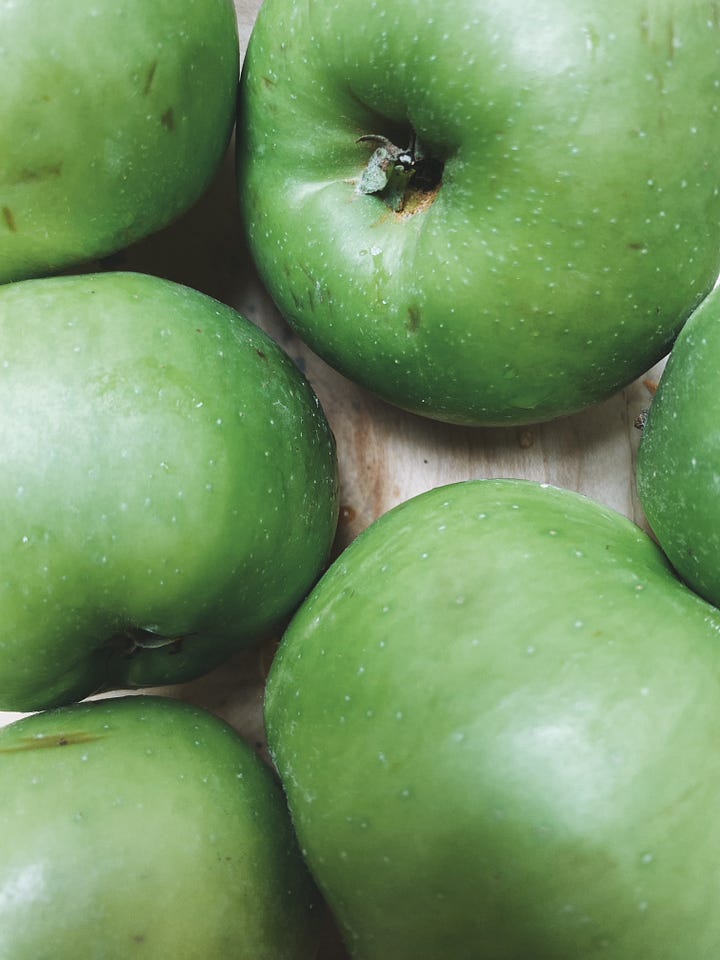
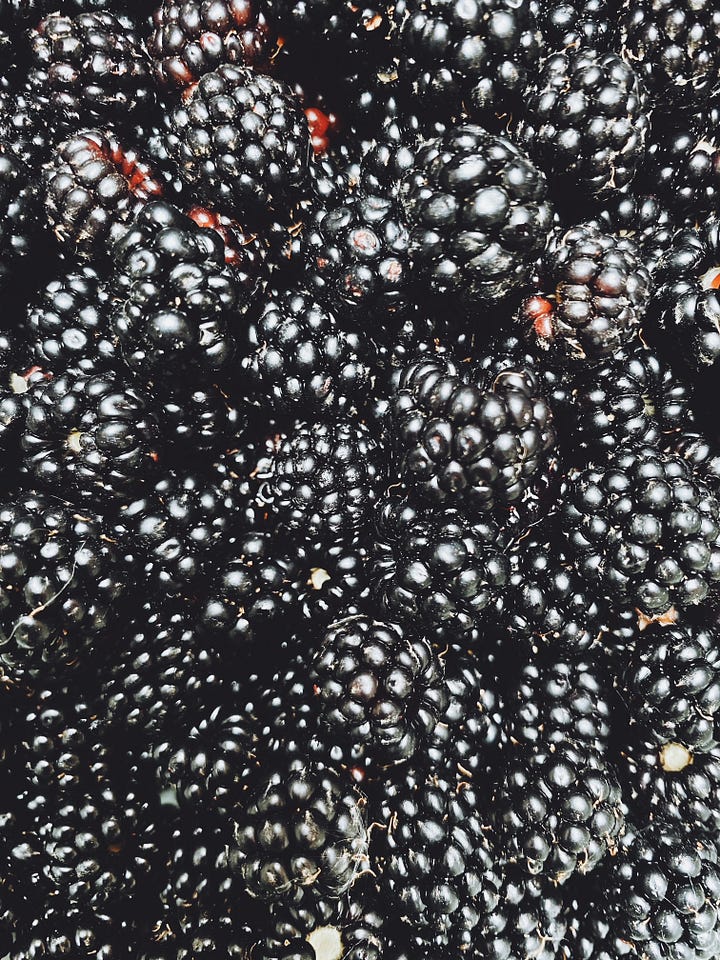
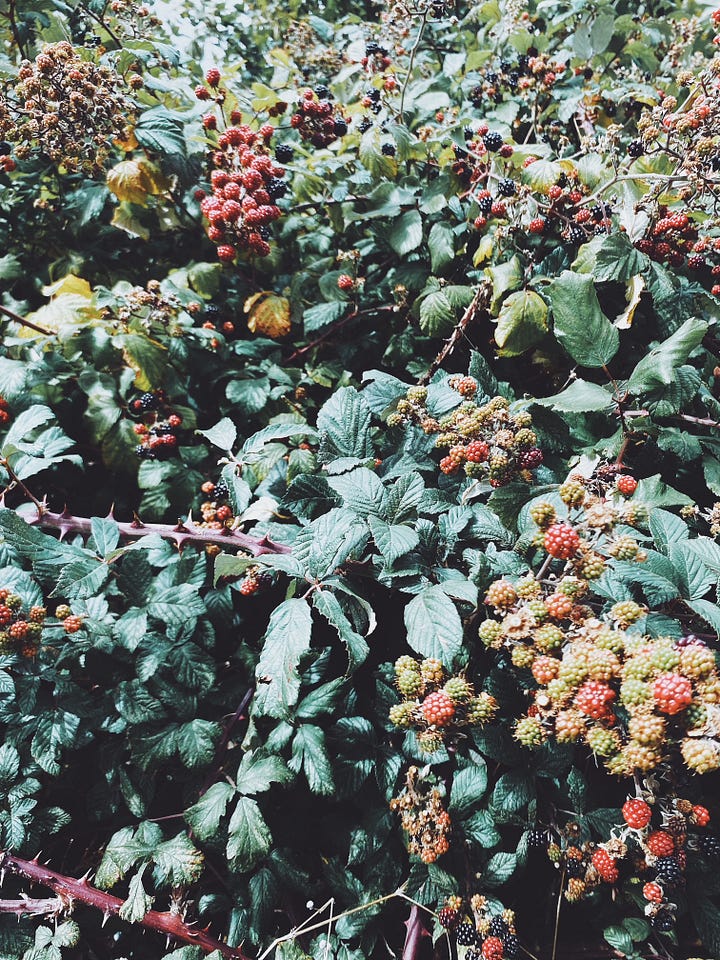
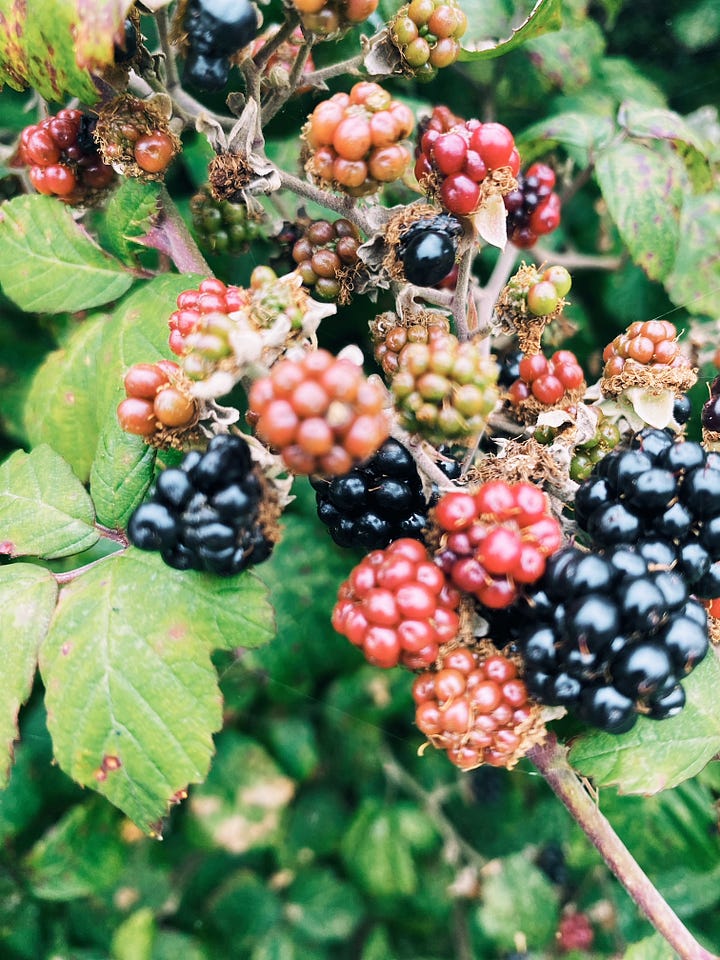
As life moved on, I continued to enter these little countries housed in our city’s neighbourhoods until one day I found myself in Italy. Homes, where everyone spent hours around the table talking, laughing, and eating garden or produce stand fresh food more than once a day. Here I fell in love, and here I stayed.
During college in NYC, I would flee to upstate New York, where my stepmother’s proper Irish dinners heaving with perfectly seasoned buttery mash, turnips, carrots and parsnips sustained me, together with Saturday night family dinners in local Italian American restaurants (Chicken Marsala on repeat).
In my early 20s, I felt an incredibly strong pull towards Ireland, so I left the fluorescent high food mile plastic-wrapped supermarket aisles of America to make a new start in Dublin. Trudging up and down Camden and Wexford Streets in my dirty Converse, past the butchers, produce stand and gourmet grocer, not to mention the farmer’s market in Temple Bar (hello hot guy at the olive stand), I began to see food in a different light.
Then I started to cook. The first recipe that I stumbled across scribbled on the back of a torn white envelope in the kitchen of my shared flat led to the easy one-bowl assembly that I would make with satisfaction time and time again - an Irish Apple Cake.
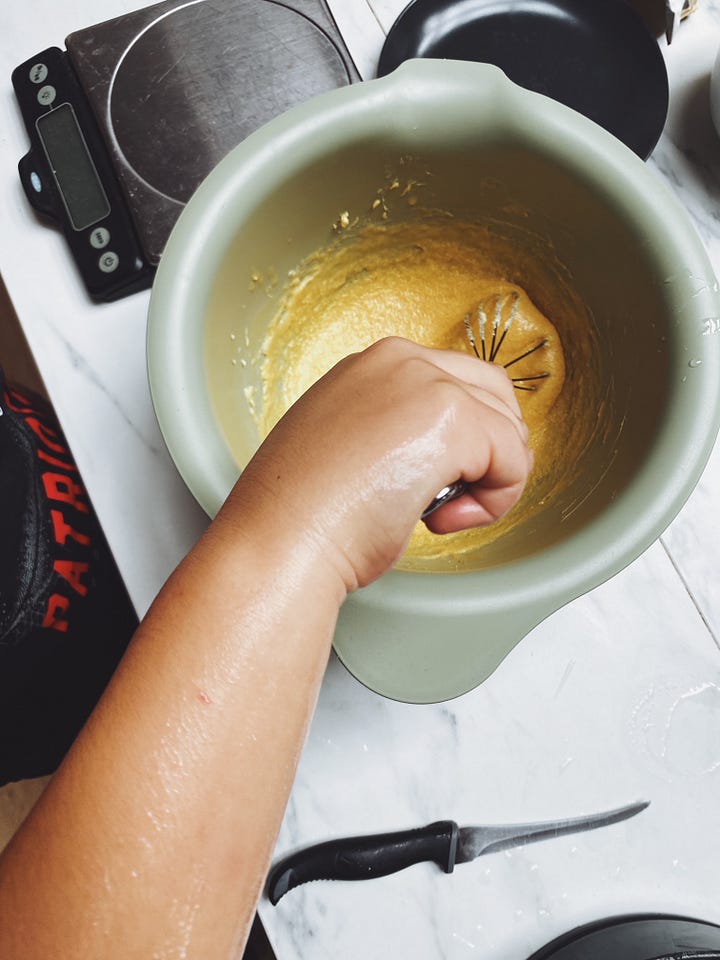
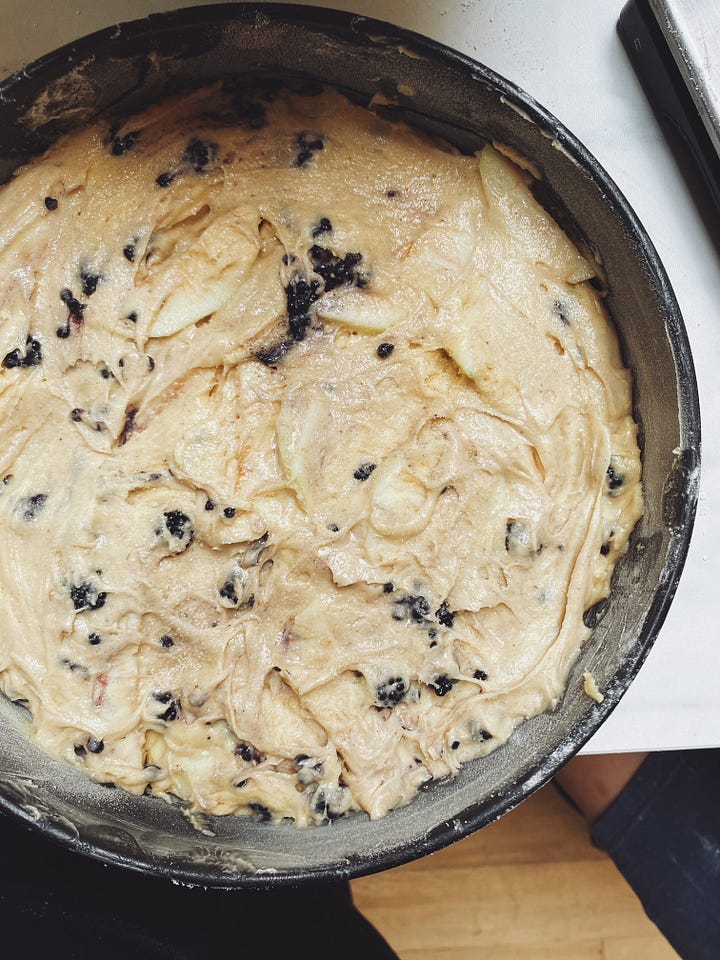
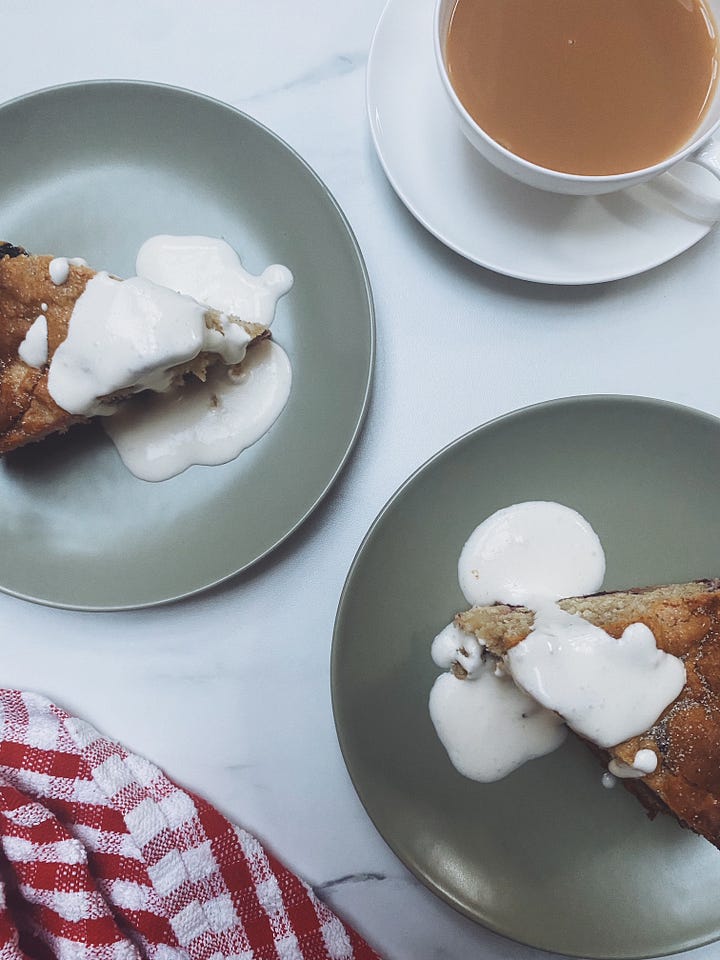
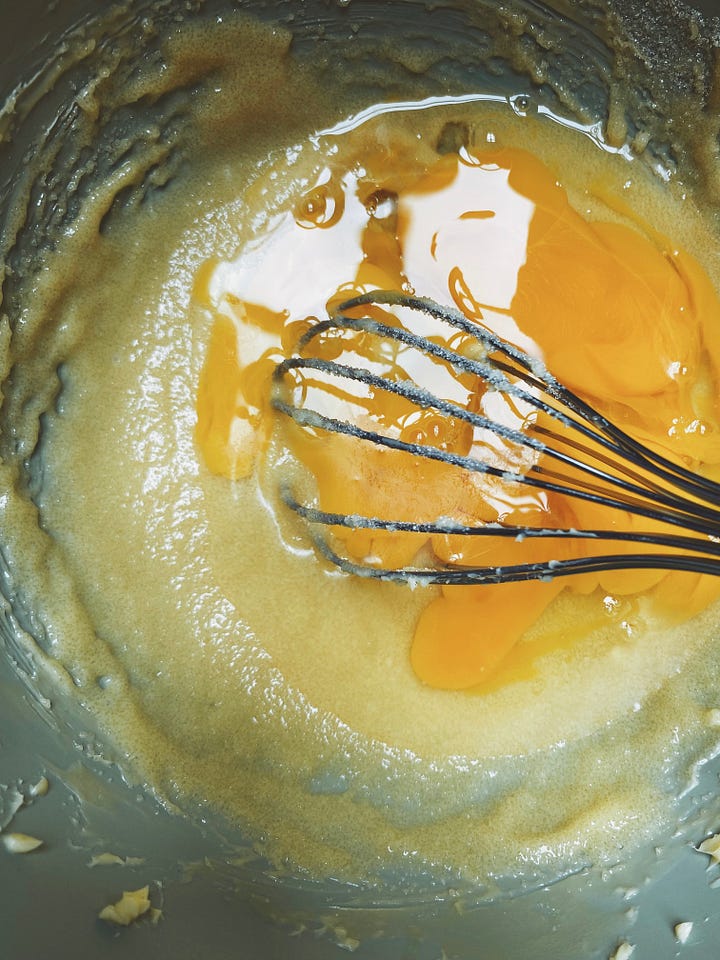
Moving forward, it became my hobby to buy quality Irish ingredients and the necessary provisions from the local Italian grocer to prepare Italian dishes.
That is until the current of life brought me to Italy in my early 30s. Six years later, I signed up for a Master’s Program at the ‘University of Rome Tor Vergata’ in an attempt to delve further into my love of food and wine. The study of La cultura dell'alimentazione e delle tradizioni enogastronomiche (the culture of nutrition and food and wine traditions) is where I became passionate about food culture, heritage, and traditions. Here, the door of the Italian kitchen opened to lead me back into the Irish one, and I began to examine and study my ancestral food heritage and the rich and often misunderstood story of Irish food.
Our immediate and extended family members leave this world taking with them the critical knowledge and skills that were once passed effortlessly through generations. How many questions do you have that remain unanswered?
I have many.
Food carries the weight of intergenerational story and survival, of moments and emotions, of joy and trauma, of having too much or not enough. We are born with the legacy of our Ancestral Foodways. These cultural, social, and economic practices relating to the production and consumption of food are intertwined into the double helix of our DNA. It is a torch that we carry until it is passed on.
Food can be a source of pain, control and misinformation, but it can also seed new paths of inspiration and connection to regenerate and reeducate. Discovering, embracing and sharing who we truly are through our food stories, traditions and recipes is a transformative possibility accessible to us all. We are strong in body and mind when we walk in the pride and strength of our Ancestral Foodways, and they are a very potent source for personal and collective healing. This they have always known (a little shoutout to the colonizers).
If you glance through the looking glass of your food past, what do you see?
We are generations of seeds, crops, animals, fish, wild foods, fires and pans — and recipes, if only by instinct, prepared with care for us by our ancestors’ hands.
We are fregnacce alla sabinese and wooden tables of hot polenta, we are blueberry pancakes with maple syrup and macaroni and cheese, we are pans of fried brown trout, we are Kerry Apple Cake.
Every country has its apple cake. This one belongs to Ireland. Apples and blackberries are part of native Irish biodiversity and tis’ the season. Get your hands on some Bramley apples for an authentic Irish taste - you might embrace heritage varieties as well. Blackberries bring this easy-to-make cake to another level. Swap in gluten and lactose-free ingredients to make this classic dessert accessible to everyone at the table.
Kerry Apple + Blackberry Cake
LF/GF
Serves 6-8
Ingredients:
425g self-raising white flour, regular or gluten-free, sifted
170g grass-fed butter, ideally Kerrygold or lactose-free, room temperature
220ml regular or lactose-free whole milk
150g golden caster sugar
3 free-range eggs
2 large green cooking apples – Bramley or Granny Smith
200g blackberries
1/3 tsp ground cloves
1/3 tsp nutmeg
1 tbsp of lemon juice
Method:
1. Preheat the oven to 200°C
2. Lightly grease the inside of a standard springform cake tin with butter and lightly dust with flour
3. Peel, core and thinly slice your apples, then toss them with lemon juice to prevent them from browning
4. Cream together your butter and sugar. Add the eggs and whisk to combine, then add your milk and stir again
5. Slowly fold in the flour, cloves and nutmeg
6. Then gently fold in your apples and blackberries
7. Add the mixture to the pan and bake for 35-45 minutes
8. Lightly sprinkle the cake with caster sugar as soon as you remove it from the oven. Serve warm with custard, yogurt or fresh cream
Notes:
Add up to 3 apples if not using blackberries. Use up to 170 grams of sugar for a sweeter cake.


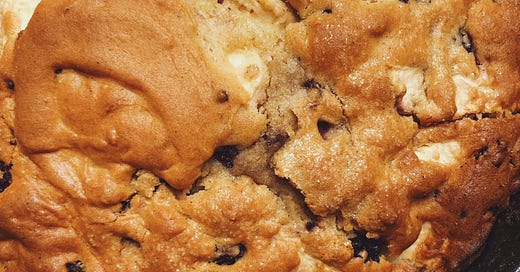



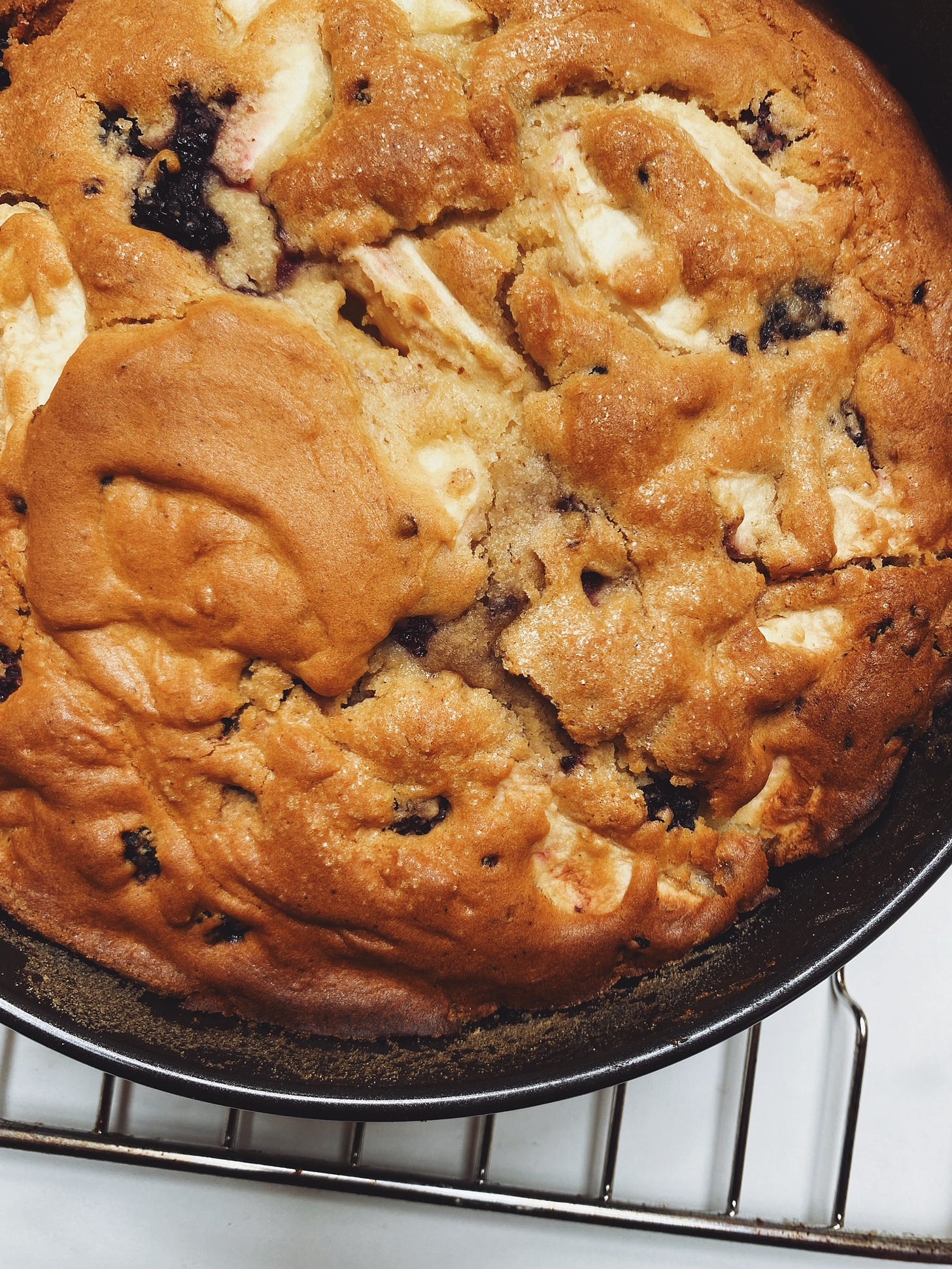

Wow Jess! I have to make it this week!
(I loved the article but especially the final part 🥰)